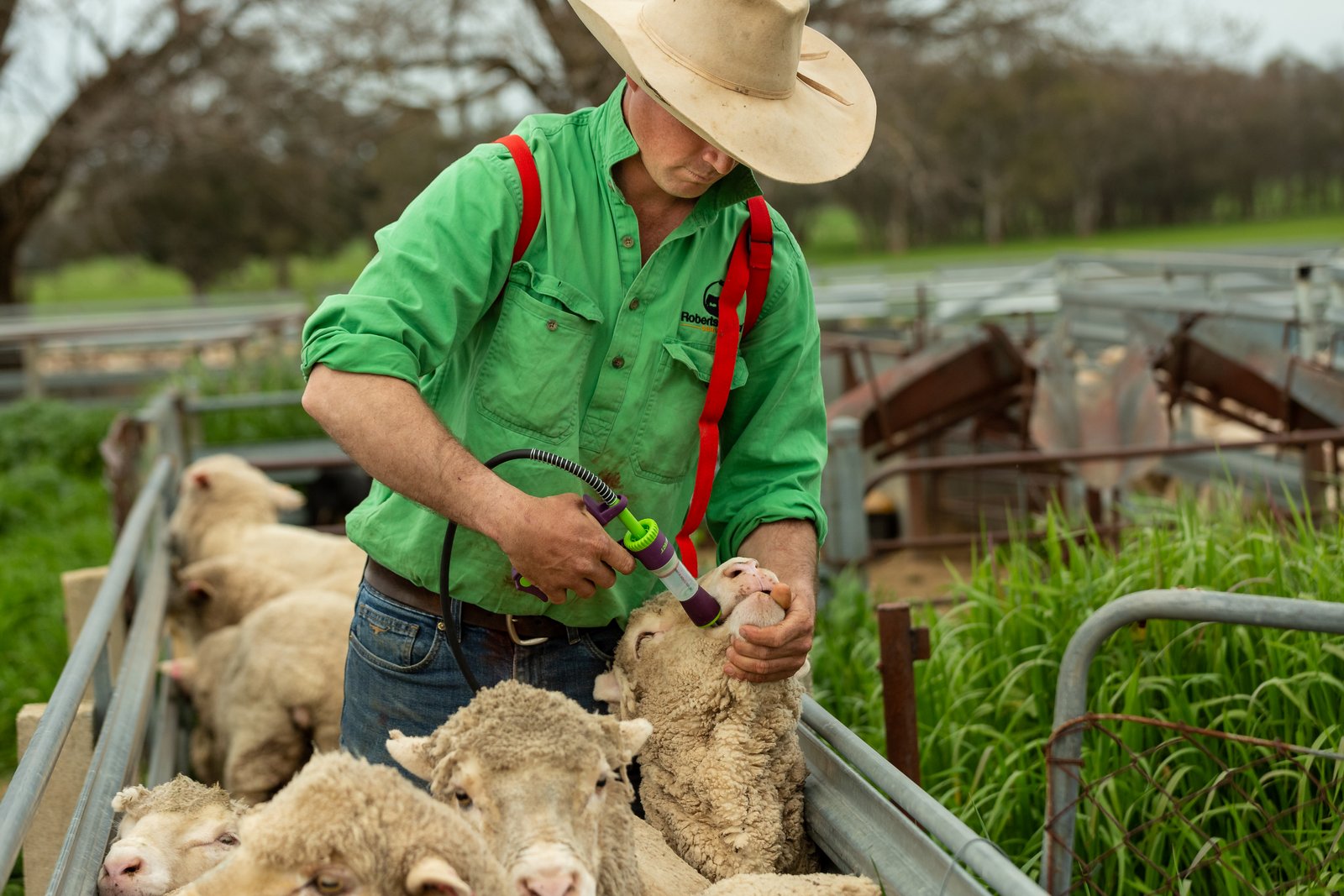Preventing drench-resistant worms in sheep
 PRODUCTION ADVICE - MAY 2021 - ANIMAL BIOSECURITY & WELFARE
PRODUCTION ADVICE - MAY 2021 - ANIMAL BIOSECURITY & WELFARE
By Linda Searle
District Veterinarian
P: 03 5881 9919 | M: 0427 629 740 | E: linda.searle@lls.nsw.gov.au
 The Wormboss website states that the cost of worms to the sheep and wool industries has increased by an estimated $80 million between 2006 and 2015. Much of this increase is thought to be due to the development of drench-resistance in the worm population. So, what can we in the pastoral regions do to slow down the development of drench-resistant worms out here?
The Wormboss website states that the cost of worms to the sheep and wool industries has increased by an estimated $80 million between 2006 and 2015. Much of this increase is thought to be due to the development of drench-resistance in the worm population. So, what can we in the pastoral regions do to slow down the development of drench-resistant worms out here?
How worms work
Generally, worms have three different life stages. The adult worms live in the sheep’s gut and lay eggs. These worm eggs are passed out in the sheep’s dung. They then develop into larvae which live on the pasture, waiting to be ingested by a sheep where they can go on to develop into adults and repeat the cycle.
Worms and sheep have co-existed for so long that they have developed certain adaptations. As the sheep become older and bigger, they generally develop resistance against worms after exposure. However, this resistance to worms can become suppressed in late pregnancy and during lactation. This means more worms in the ewe, leading to more worm larvae on the pasture and a higher risk of transmission to the young lambs as they start to graze.
How drenches work
Sheep drenches target worms living inside the sheep. Most drenches are short-acting, so there is no residual effect on new larvae that are ingested from the pasture.
Refugia – what is it? If sheep return to the same paddock they after drenching, the larvae that they are exposed to will essentially be the same population of worms as previously. This population of larvae is called refugia, as they have not been affected by the drench.
If you move sheep to a new ‘clean’ paddock after drenching - for example, a rested crop stubble - the larvae that develop will most likely be from worms that survived the drench. These larvae are what eventually can go on to create headaches with drench-resistant worm burdens.
So how do we balance the sheep, the worms and the drenches?
- Avoid drenching if you don’t have to. This is especially important in dry or drought conditions. A WormTest can be used to help decide if drenching is warranted and should be done a few weeks out from your anticipated drenching time (i.e. pre-lambing, at weaning, or when scouring is noticed).
- If drenching is necessary, use an effective one. Ideally the drench should kill as close to 100 per cent of the worms as possible. A drench-resistance trial or a Drench Check can show you which drenches are most effective on your farm. This involves a WormTest before drenching and another 10-14 days after drenching to check that the number of worm eggs has significantly reduced.
- Follow drench label directions. Always drench to the heaviest sheep in the mob and make sure your drench gun is properly calibrated. We want to avoid underdosing.
- Use a combination drench. Using drenches with two or more active ingredients reduces the risk of drench-resistance developing. Worms that are resistant to one ingredient may still be killed by one of the other ingredients. The likelihood of a worm being resistant to multiple drench groups is much lower than to an individual drench alone.
- Avoid drenching straight onto specifically prepared low-worm-risk paddocks. If you have to, treat the sheep with an effective drench from a different group when they leave the low-worm-risk paddocks. You could also ensure that next time, the paddock is grazed with a different mob of worm-carrying sheep that were last treated with a different drench then the first. The aim here is to ensure that the worm larvae that end up on the pasture aren’t just the ones that are resistant to the drench used on the original mob.
- When quarantine drenching newly purchased sheep, including rams, use a drench that contains four unrelated drench groups, including one of the new drench groups. One to three days after treatment, when the worm eggs present during drenching have passed out, move the new sheep to a paddock that has had home-bred sheep on it. This ensures that larvae picked up are representative of the worm population on the property. If possible, avoid grazing the first quarantine area (where the eggs have been deposited) for three months in summer or six months in winter to give time for any larvae that did develop to die.
- Consider grazing management strategies, such as rotational grazing, to reduce worm burdens. The adult worms only live for a couple of months in the sheep, so for worms to persist, new infective larvae need to be ingested. These infective larvae are usually found toward the base the plant. Rotational grazing helps break the life cycle of the worms, and by avoiding overgrazing and consumption of the lower portions of the plants, can result in fewer larvae being ingested.
- Breed well and feed well. Select sheep that show better worm resistance and resilience. When choosing rams, consider those with negative Australian Sheep Breeding Values (ASBV) for Worm Egg Counts and Dag Score. There are also management programs like Lifetime Ewe that focus on nutrition and ensuring ideal condition scores in late-pregnant and lactating ewes, and weaner management programs geared at achieving target minimum weaning weights (40 per cent of adult weight).
Drenches are a valuable tool for maintaining an acceptable balance between sheep and worms. New drench types don’t come along very often, so we need to preserve our existing effective drenches for as long as possible. This helps us have healthier and more productive sheep, and a happier bottom line.